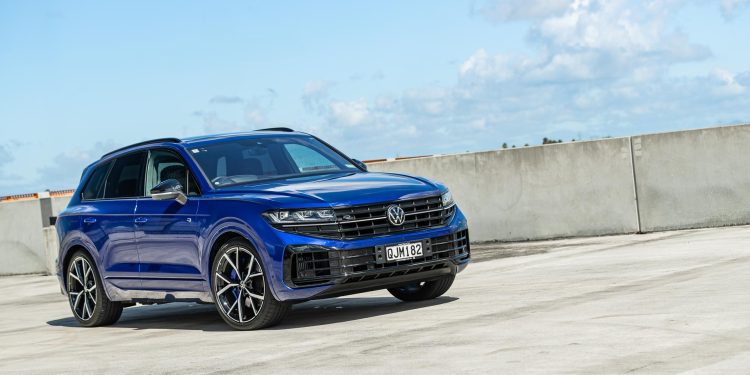2024 Volkswagen Touareg R PHEV review
Words: Kyle Cassidy | Photos: Isaac Western
The R now sits at the head of the Touareg line-up locally. It’s a plug-in hybrid of the performance kind. Is it the best of the R breed?
The Touareg is now the top dog in the Volkswagen realm, the flagship model. And of the R, VW marketing gurus mention that “no other model offers as much performance or travel comfort”.
It’s an interesting (and Germanic) statement, but it hints at the nature of this particular R variant; quick but also comfortable. Think fast but also luxurious and easy.
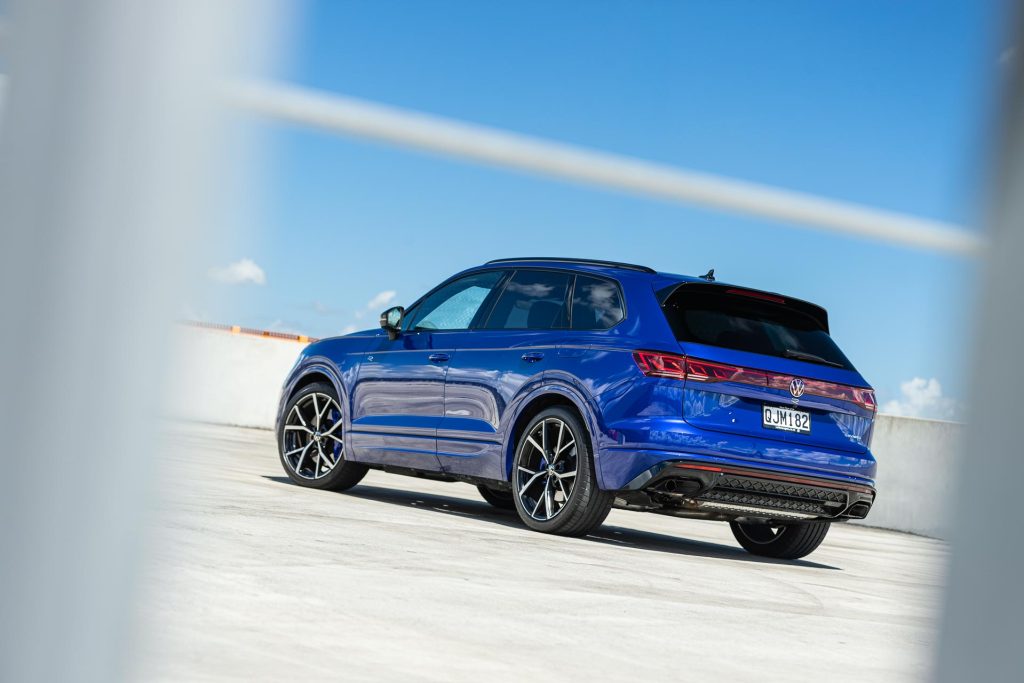
The Touareg range has recently been revitalised with a new look, additional on-board tech and a tweaking of some of the mechanicals.
The new Touareg range consists of three variants with the V6 diesel and more potent S variants returning, the pair now joined by the plug-in hybrid R at the top.
It’s not the first Touareg R; you might remember the limited Touareg R50 from back in the day when it ran with the hulking 5.0-litre V10 diesel. The time of the big engine is done, however.
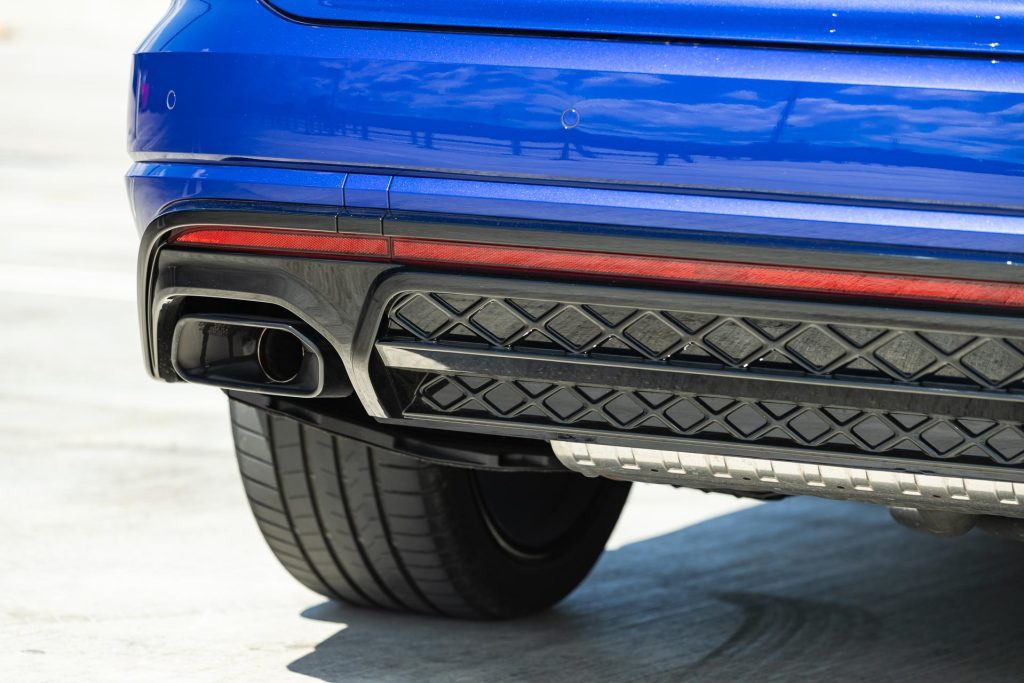
European performance models now need to be electrified to stay on side with the legislators. The plug-in R was meant to turn up here a few years back, when this third-generation Touareg touched down, though it never eventuated.
But it’s here now, replacing the V8 TDI and no doubt helping VW NZ stay on the right side of the Clean Car Standard equation thanks to its low emission figure, stated at just 44g/km.
That translates to 1.9L/100km and, on paper, looks quite favourable up against the diesel’s 205g/km (7.9L/100km). It also stumps up with a sweet 340kW and 700Nm, and the potential to scamper to the legal limit in a tick over five seconds.
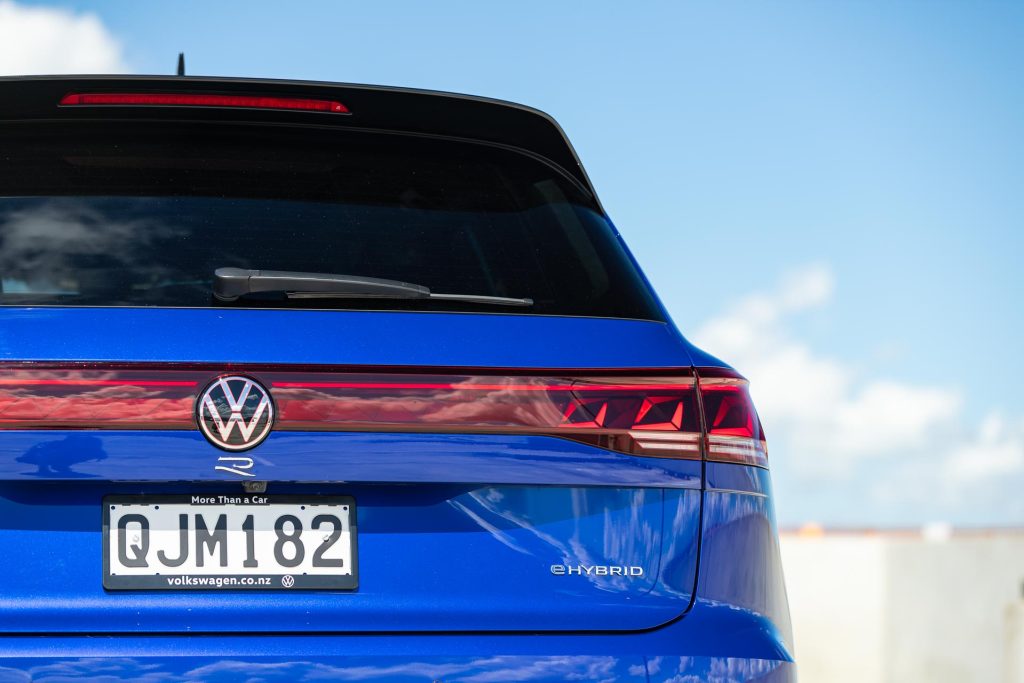
That’s thanks to a combination of a 3.0-litre turbocharged V6 petrol and a 100kW motor running through an eight-speed transmission and out to all four wheels.
Plenty of modes
Along with Comfort, Normal, Sport etc there are the e and hybrid modes. With the battery pack sufficiently charged, it defaults to e-mode to reduce your local emissions.
The spec sheet says it’ll do up to 53km on a charge. We managed 45. The 100kW motor has quite a task moving 2.4 tonnes around, but is helped by the transmission.
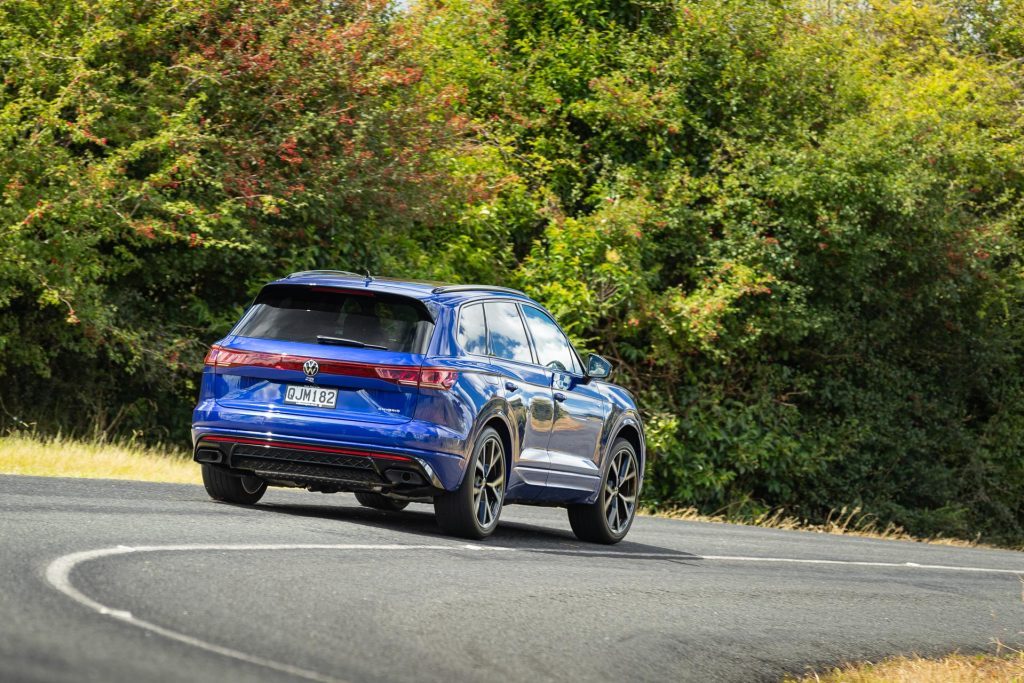
The e-mode’s not overly creamy as it moves through the ratios, and it can be quite abrupt off the mark. There’s a variable kickdown point on the throttle which helps you keep in the e-mode and avoid triggering the engine into action.
A recharge via the wall plug took 10hrs at our place, sucking up 17.9kWh of juice. With electric consumption equating to 39.5kWh/100km, it’s no model of efficiency.
But still, it’s better than the 13.3L/100km average we saw over 50km of urban commuting in hybrid mode once the battery was done.
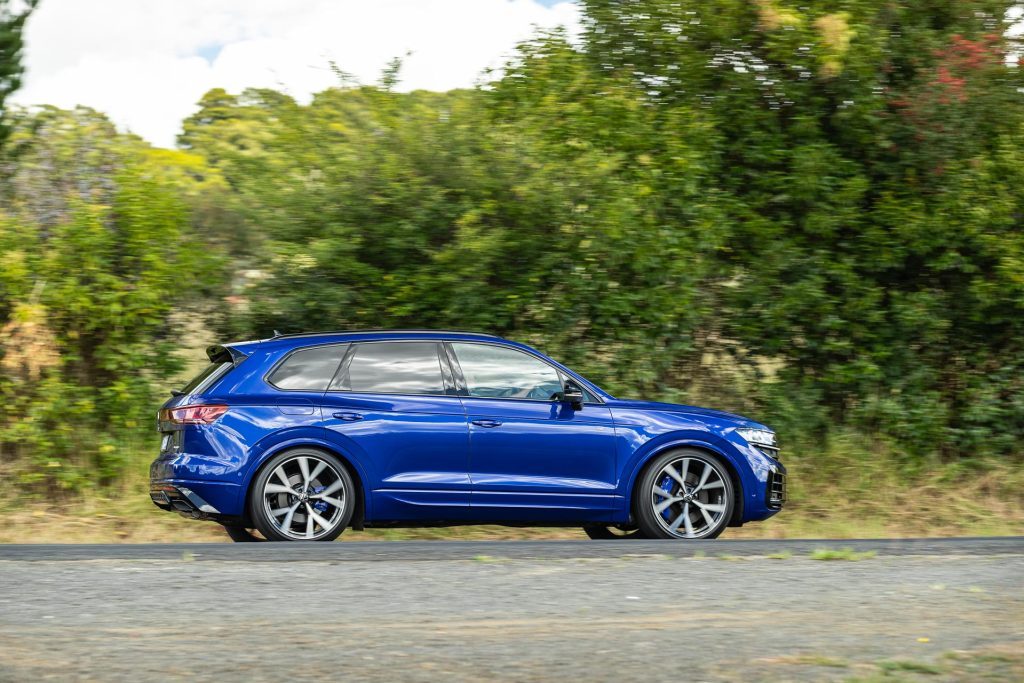
When low on volts, you still get longer idle/stop periods and help from the electric motor (thanks to regen) but it’s still a V6 petrol moving a large SUV. The long term average read 10.6L/100km, while our overall figure on test was 11.4.
That’s not too bad for a petrol-burning performance SUV but with RUCs on top of your fuel bill, your running costs will be high.
Switching to hybrid when there’s more life in the battery gives you the full effect of the outputs, and this feels mighty strong, pulling powerfully from right down low.
This mode was preferable, given the R then felt more like a sports SUV should with 700Nm. It’s just a pity you don’t always have that torque on tap.
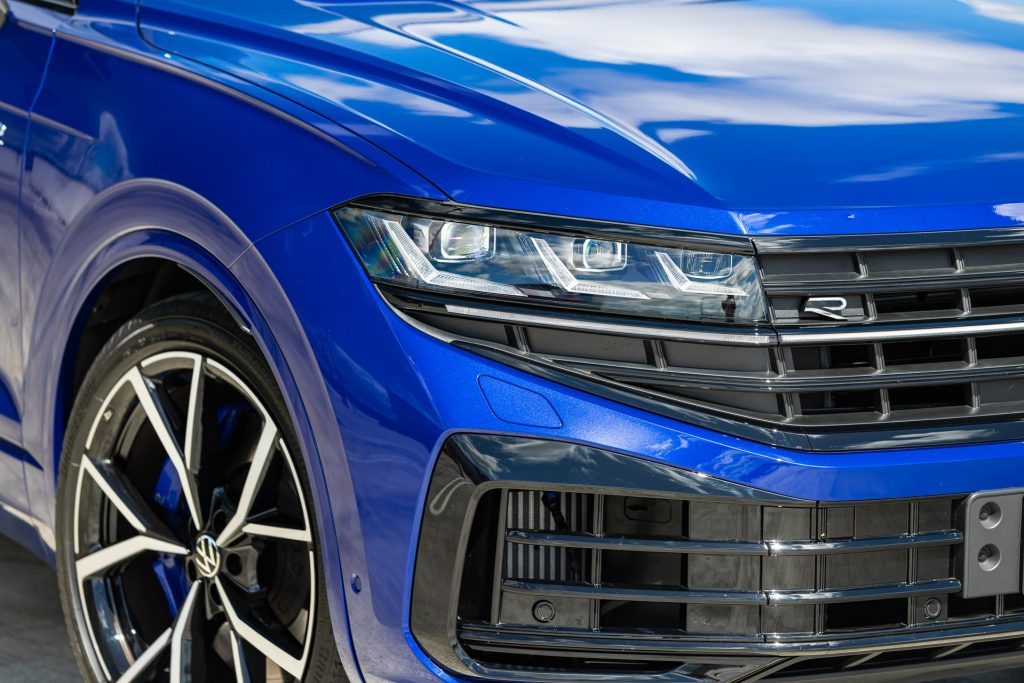
When the battery is too low, you get intermittent boosting when ‘going for the doctor’; there’s a short burst from the motor but then it’s just the V6 doing all the work.
And that’s probably why we didn’t quite meet the sprint claim when we tested it. With the battery being too low to give its full effect, the R came up short at 5.4sec.
R for racy?
Given the Touareg is more of a touring, comfort-oriented SUV rather than something trying to outpoint a BMW X5, this then is not the most dynamic R model you’ll encounter.
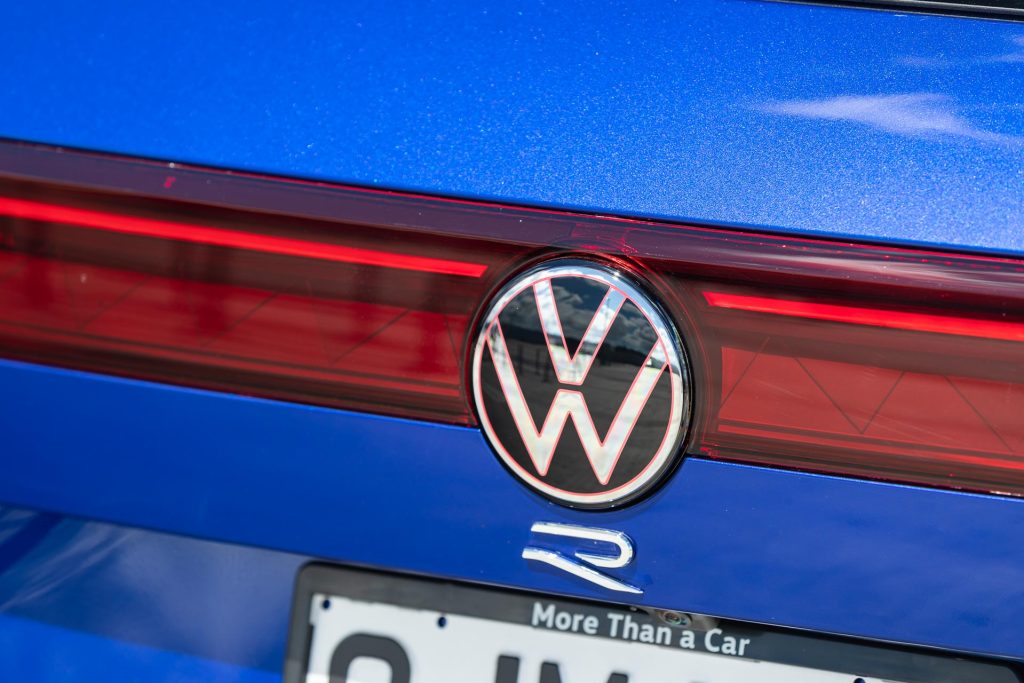
It’s competent but never truly convinces when asked to combat the curves.
The Sports mode helps counter some of the excess roll by firming the resistance of the dampers, though without detriment to the ride.
The steering always feels a bit distant however and you get the sense the vehicle’s dynamic controller is limiting torque and nipping the brakes subtly in the background to keep things tidy.
These systems are masters at covert operations now. While the Torsen centre diff can vary the drive between axles (up to 80 per cent rear), the R always feels like 2.4 tonnes of SUV in the curves, and just isn’t happy being pushed around.
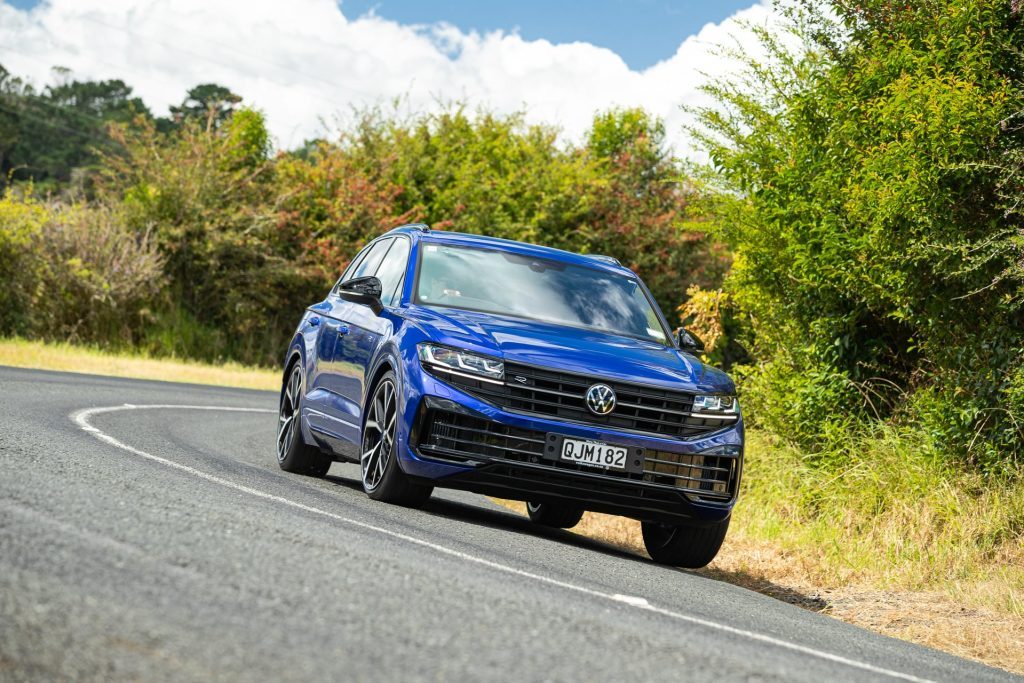
In the Normal mode, the engine switches in and out, which is okay when cruising the highway, but find yourself on a windy road and you’ll want to be in Sport mode where the engine is on constantly to deliver a better response.
The V6 purrs more than it growls, and competes with some tyre roar on coarse chip surfaces.
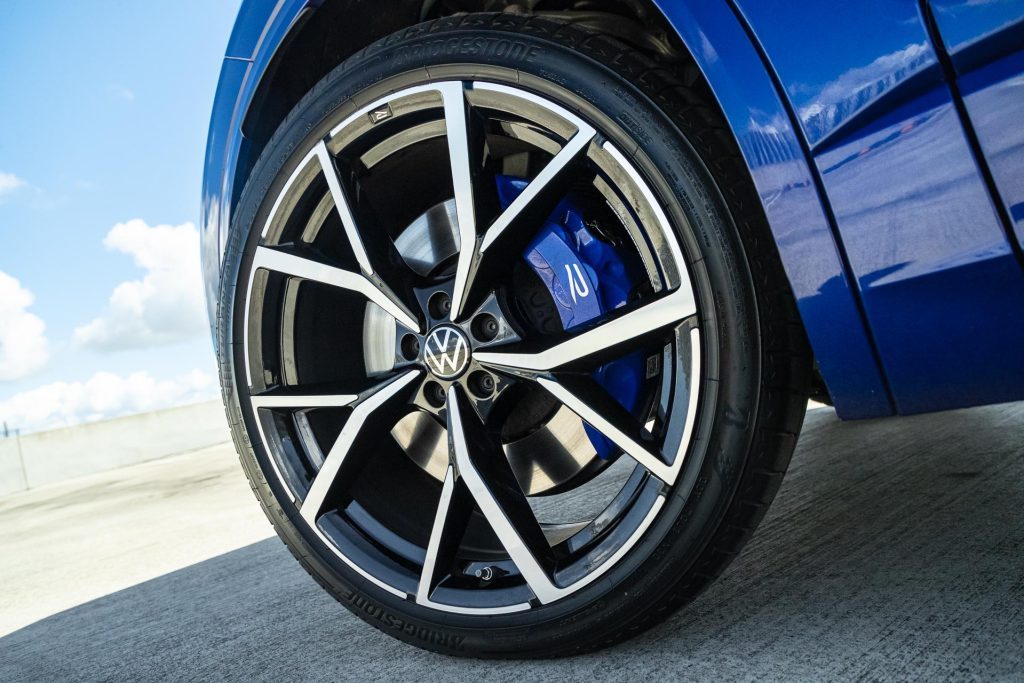
What about the luxury?
There’s plenty of that to go with the sports persona. It looks the business on the 22-inch wheels and with supple air suspenders it also rides well, the odd sharp bump aside. It takes care of most speed bumps effectively.
Upon entry to the high-rise cabin, you’re greeted by a big 15-inch display that looks impressive but takes a while to warm to. It’s slow to come online at start up, and is a tad laggy switching between menus.
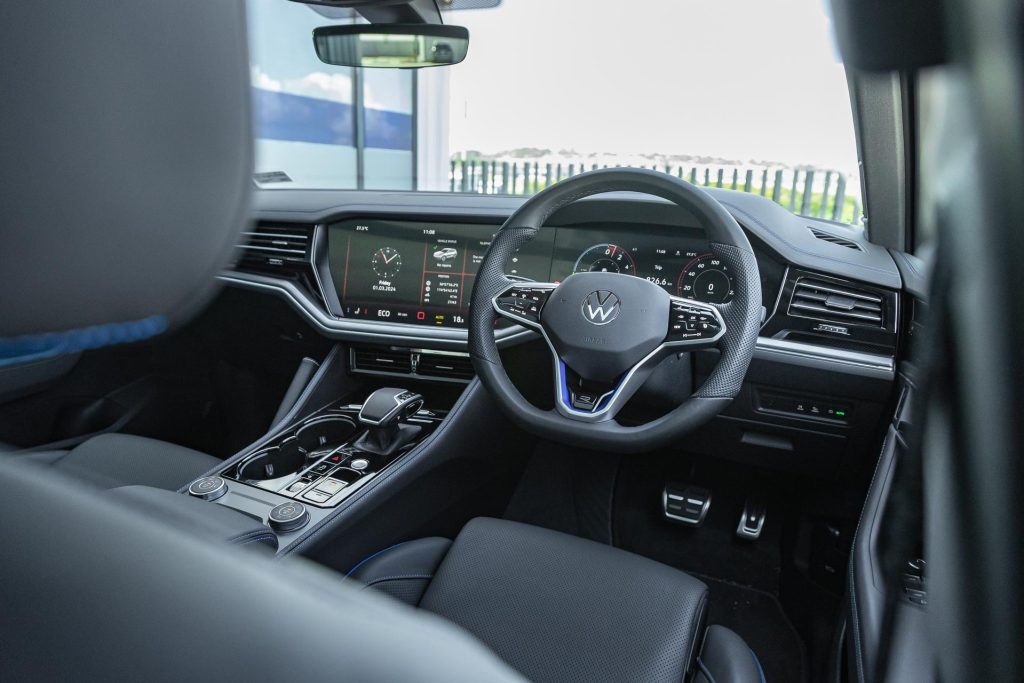
There are a few of those too; it can be hard to find what you’re looking for, constantly swiping and tapping and cursing.
Hopefully you find the controls for the seat’s massage function, it’s quite good. The seats themselves are too, soft and enveloping with just enough bolstering to keep you in place without being overdone.
Soft surfacing is everywhere, with double stitched seams for effect.
On a few occasions we wondered why the steering wheel seemed a bit hot, before realising we’d bumped the new (to Touareg at least) haptic button on the spoke.
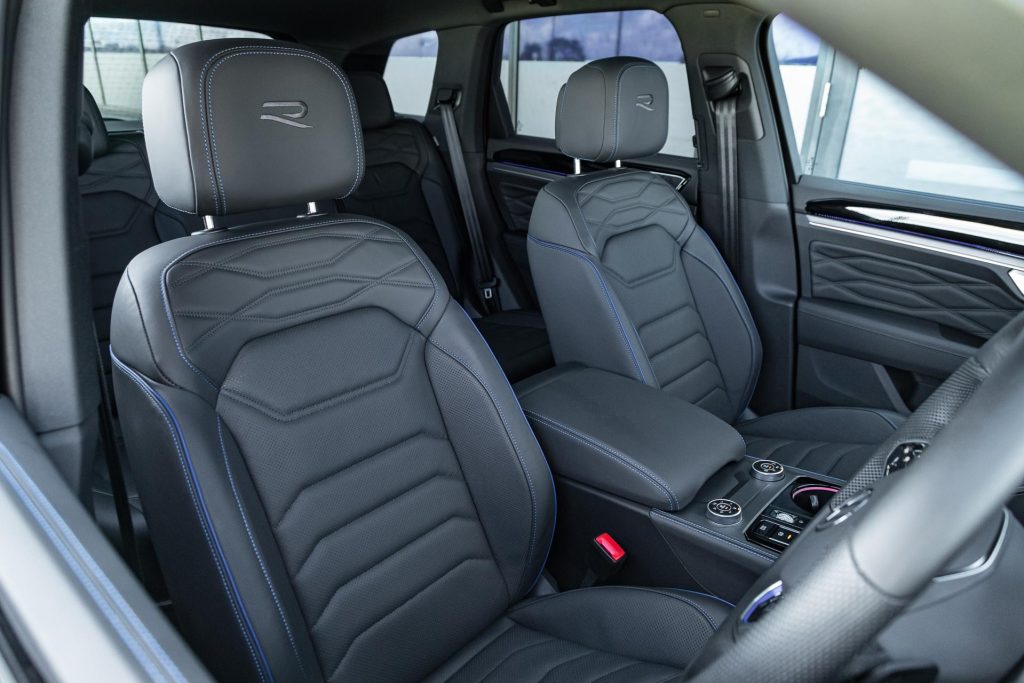
It’s easy to do, and yet some of the other functions can be a tad difficult (like increasing the speed of the cruise control).
No complaints however regarding the safety systems, of which there are many. These are all on guard but not on your case constantly.
We did note the drive monitor had been switched off in the menu (and it stays off) which was perhaps best; it’s our least favourite addition to the modern safety arsenal.
Space is on the generous side in the back with plenty of cabin width and leg room. Passengers get separate zones for the climate control and there are enough charge points to keep ’em happy too.
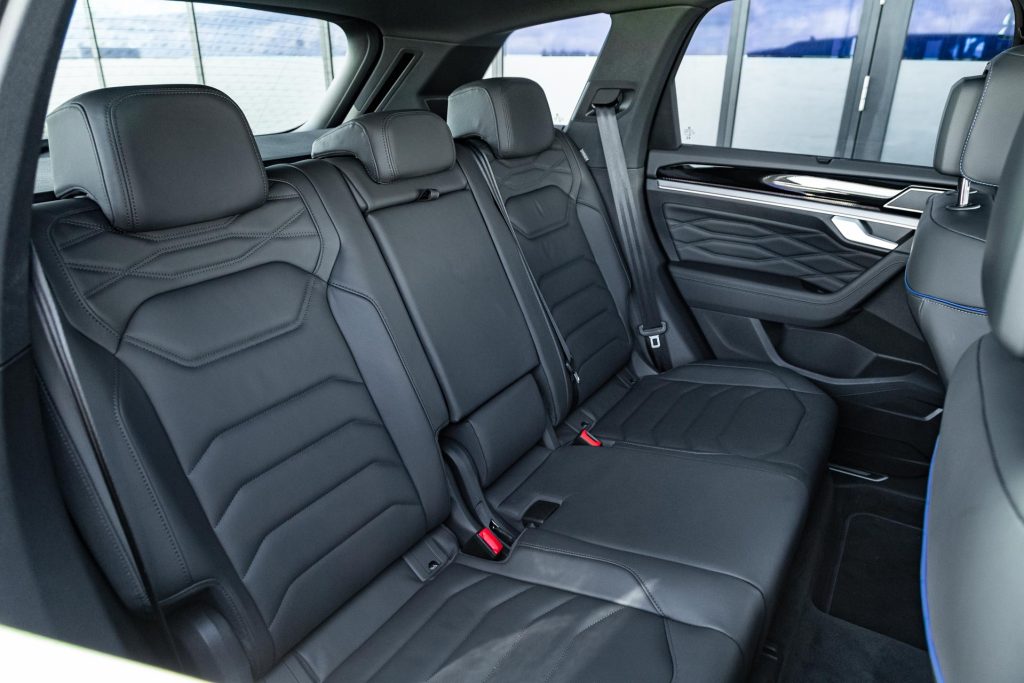
While there’s less ultimate luggage capacity in the hybrid at 655L (810L in the diesel) there’s still plenty. And still more when you drop the seats (split 40/20/40), a task made easier with remote levers.
Like the other models, the R can also haul up to 3500kg.
It’s not too bulky when commuting, (though it is quite wide) and so manoeuvres about okay even without the rear-wheel steer feature that the S model enjoys.
In Comfort mode, the steering is a quick and light operator, and there’s a decent camera system too.
However, it’s only active when reversing; it would be good if it popped up when the hyperactive parking sensors started going off.
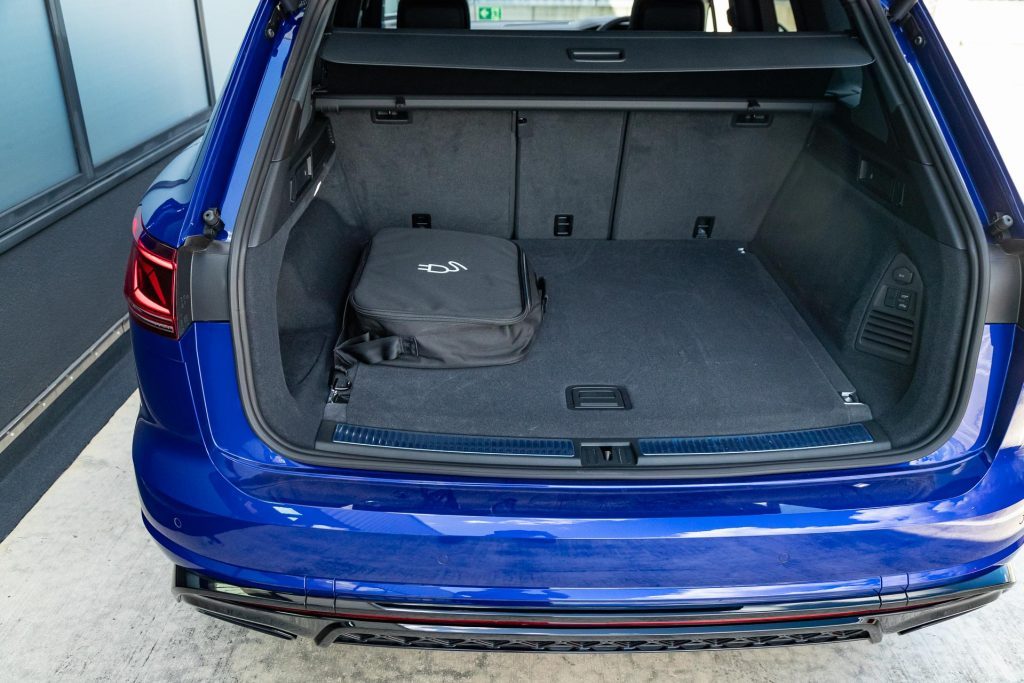
Prices on the rise
Prices have been steadily increasing for this generation of Touareg. Launched in 2018 here, it was $92,990 for the V6 and $107,990 for the S.
Back in 2020, the range was re-jigged with the V6 at $97,990 and the S, which gained some R-line extras, was $121,990. In 2024, it now kicks off at $111,990 for the 170kW/500Nm model while the better specified S R-line is $141,990.
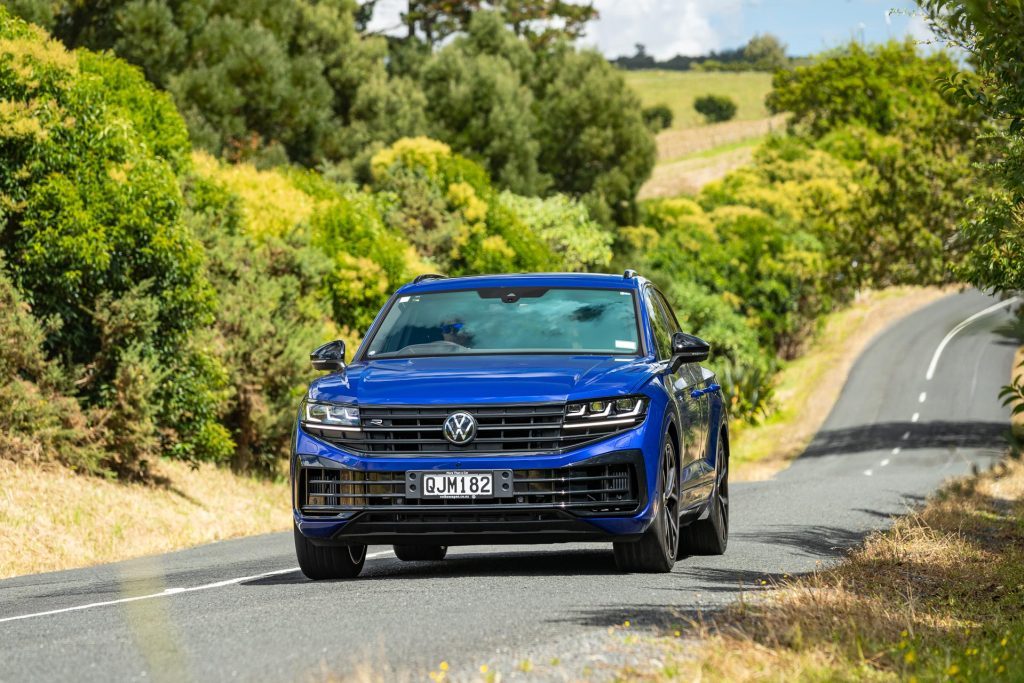
That used to be the price of the now discontinued V8, while the R lists at $159,990. At least it’s a better deal than the $169,990 asked for the V10 20 years ago.
While not as quick or dynamic as other Euro SUV performance range toppers, it’s not as expensive either. But as we said it’s better to think of the R as quick, comfortable, luxurious and easy.
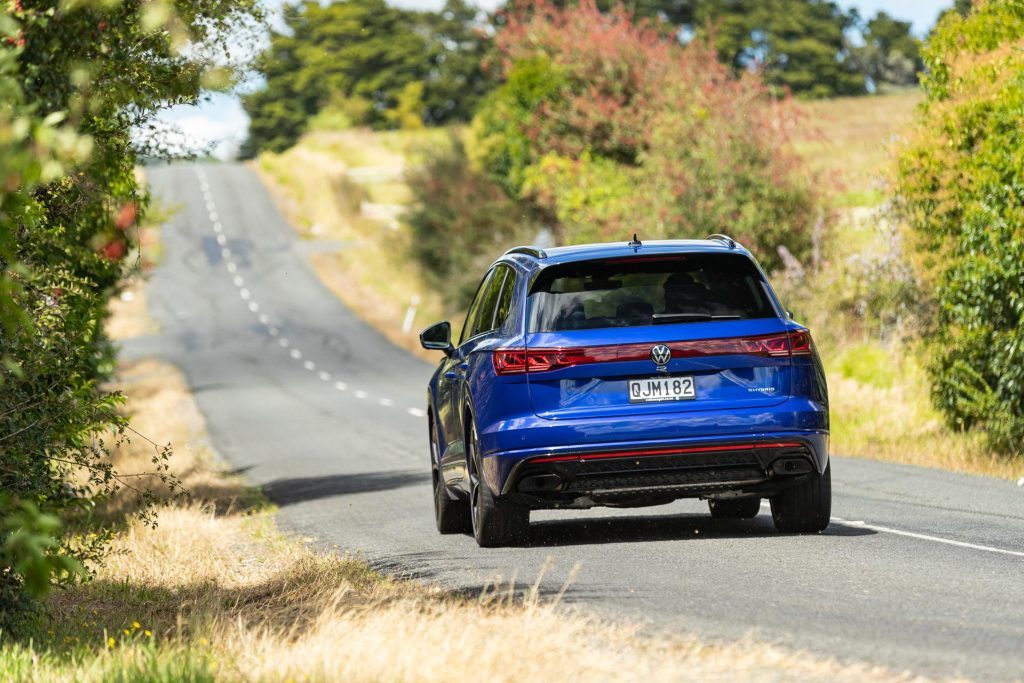
And something that if you plug in while it’s parked up, won’t add to the local smog problem when you’re in traffic.
| Model | Volkswagen Touareg R PHEV |
| Price | $159,990 |
| Engine | 2995cc, V6, T, DI |
| Power | 250kW |
| Torque | 450Nm |
| Battery | 17.9kWh |
| Motor Output | 100kW |
| Combined System Output | 340kW / 700Nm |
| Drivetrain | 8-speed auto, AWD |
| Turning circle | 12.2m (2.5 turns) |
| Fuel Use | 1.9L/100km |
| C02 Output | 44g/km |
| 0-100km/h | 5.41 sec |
| Tyre Size | f/r-285/35/R22 |
| Fuel Capacity | 76L |
| Stability systems | ABS, ESP, TV |
| Safety | AEB, ACC, BSM, LDW, RCTA, ALK, AHB |
| Luggage Capacity | 655-1675L |
| Tow rating | 750kg (3500kg braked) |
| Service intervals | 12 months/15,000km |
| Warranty | 5 years/150,000km |
| ANCAP rating | 5 Stars (2018) |
| Weight | 2435kg (claimed) |
This story first appeared in the April 2024 issue of NZ Autocar magazine.


